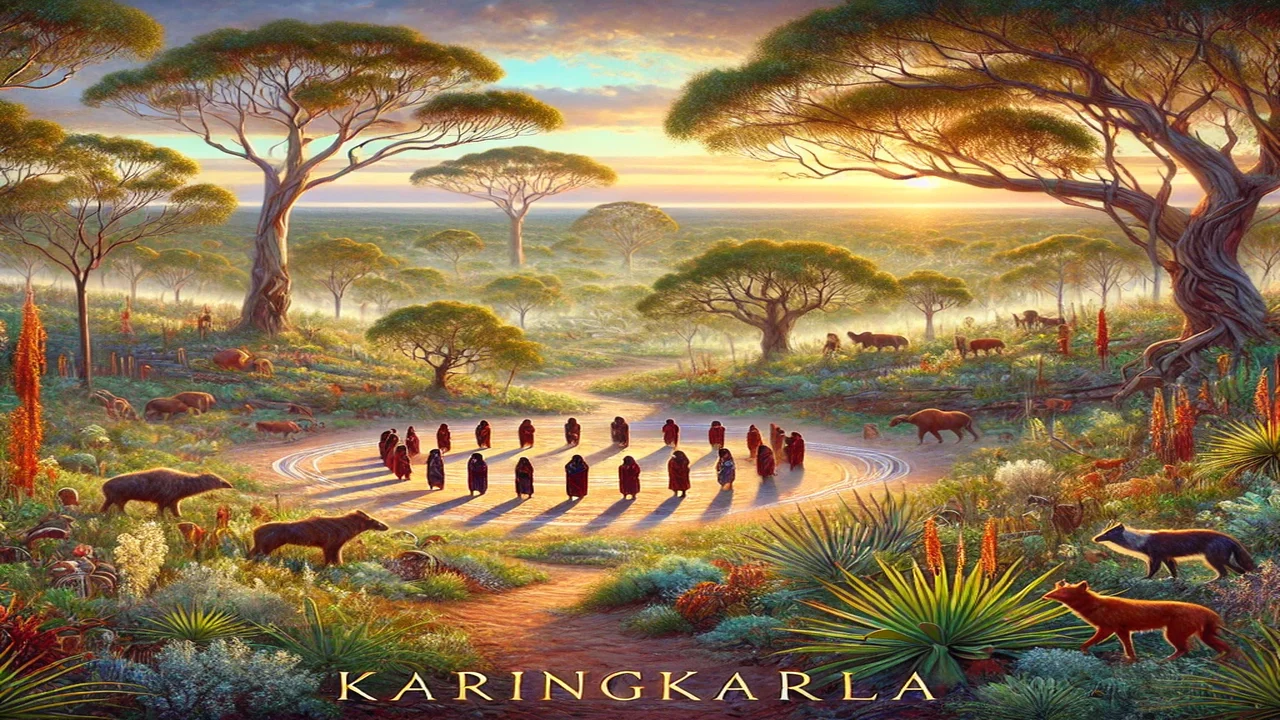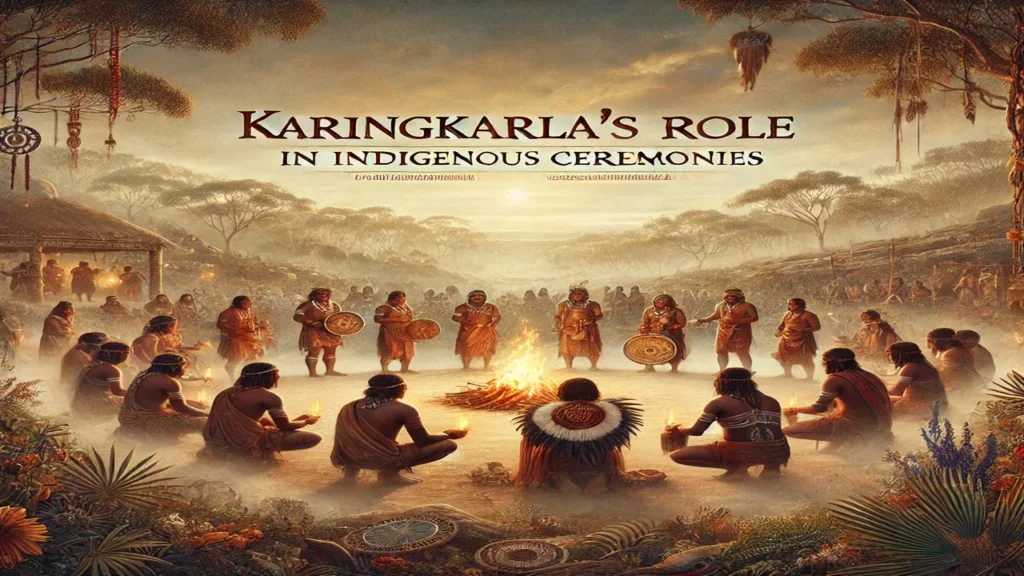Karingkarla: A Sacred Connection to Land and Spirit

Introduction
A deep and holy bond with the earth is at the core of Indigenous Australian culture. Karingkarla, a word standing for a location, a spirit, and a way of life for the Kaurna people of the Adelaide Plains, is one of the most respected emblems of this link. This relationship goes beyond a simple link to the soil; it is a complex web of beliefs, traditions, and heritage that has been spun by innumerable hands.. This article explores the cultural, spiritual, and ecological significance of Karingkarla, delving deep into its meaning.
What is Karingkarla?
Karingkarla holds great spiritual significance for the Kaurna people, going beyond being just a geographical location. All parts of nature, from the soil to the plants to the animals, are alive and meaningful in this holistic view of the land, which is summed up by the term. Karingkarla is a holy place for the Kaurna people, where they gather to honor their ancestors, carry out traditional rituals, and preserve their knowledge. One might feel a sense of continuity and belonging at this spot where the past, present, and future all come together.
Cultural Significance of Karingkarla
Karingkarla and Indigenous Australian Culture
As a representation of the inseparable bond between humans and their homeland, Karingkarla is highly significant in Indigenous Australian culture. Karingkarla is a vital part of the Kaurna people’s cultural identity since it stands for their spiritual heritage and their ancestral roots. As a living archive of songs, rituals, and tales transmitted from one generation to the next, this holy site exemplifies the tenacity of Indigenous culture.
Spiritual Anchor of the Kaurna People
Karingkarla is a spiritual anchor for the Kaurna, not only a physical location. Many believe that the area is inhabited by the ghosts of those who came before, who are said to watch over and assist the people even now. Karingkarla ceremonies are more than just rituals; they are affirmations of the Kaurna people’s connection to their ancestry and the natural world via acts of communion with the spiritual realm. Karingkarla is a holy spot because of this spiritual aspect; there, the lines between the material and spiritual worlds become porous.
Storytelling and Cultural Preservation
The Kaurna people’s relationship with Karingkarla is deeply rooted in storytelling. The cultural traditions and values of the Kaurna group are preserved through the transmission of stories, which include the knowledge and wisdom of the ancestors. Rather than being static accounts of events in the past, these stories are dynamic narratives that have an ongoing impact on the community’s sense of self and its connection to the land. As the world around them changes at a dizzying rate, the Kaurna people are able to stay connected to their heritage through storytelling at Karingkarla.
Ecological Knowledge Embedded in Karingkarla
An in-depth familiarity with the natural systems fundamental to Karingkarla is held by the Kaurna people. This wisdom has been handed down through many generations and includes an all-encompassing perspective of the natural world, in which all parts are interdependent. When it comes to their relationships with the soil, the Kaurna rely on both theoretical and practical ecological knowledge. The Kaurna people keep Karingkarla’s ecological balance intact for the sake of future generations by adhering to sustainable practices and honoring nature.
Community Gatherings and Ceremonies
The Kaurna people congregate in Karingkarla for ceremonies and community gatherings to honor their history and traditions. These get-togethers symbolize more than just socializing; they represent acts of devotion, solidarity, and spiritual bonding. Karingkarla ceremonies bring the community closer together, strengthen their connection to the land, and instill a feeling of continuity via shared rituals. The Kaurna people keep their culture alive and pass it on to the next generation through these meetings.
Karingkarla’s Role in Indigenous Ceremonies

Significance of Ceremonies at Karingkarla
The Kaurna people have profoundly spiritual ceremonies in Karingkarla that honor their ancestors and the earth. The rituals involve religious observances as well as the transmission of cultural practices through the performance of songs, dances, and stories meant to appease the land’s spirits. Ceremonies like these are important because they help the Kaurna people stay connected to Karingkarla, which is crucial for the preservation of their spiritual and cultural heritage.
Spiritual Practices and Rituals
Karingkarla is linked to several spiritual practices that are fundamental to the Kaurna culture and include a wide array of rites. The purpose of these ceremonies is to pay respect to the land’s spirits, get wisdom from the dead, and safeguard the community. According to the Kaurna people, these religious observances are crucial for preserving peace in the universe. The Kaurna people demonstrate their dedication to protecting Karingkarla’s sanctity through these ceremonies.
Connection to Ancestral Wisdom
At Karingkarla, the ancestors’ knowledge is highly esteemed. To the Kaurna, it is as if the land itself is a conduit via which their ancestors continue to guide and protect the present and future generations. The rituals and ceremonies carried out at Karingkarla, where the Kaurna people strive to pay homage to and preserve the heritage of their ancestors, demonstrate this link to ancestral knowledge. A key component of the spiritual practices of the Kaurna people is the respect for ancestral wisdom, which helps to maintain the continuity of knowledge and traditions from one generation to the next.
The Role of Dance and Song
The rituals performed in Karingkarla include music and dance. These artistic works are conduits for profound spiritual connection and narrative, in addition to being manifestations of cultural identity. The Kaurna people venerate the land and its spirits via dance and music, which they use to tell the tales of their ancestors and rejoice. The Kaurna people keep their cultural traditions alive and ensure their history is passed down through generations by performing these rituals.
Community Participation and Unity
Community involvement and solidarity are key themes of the rituals held in Karingkarla. The Kaurna people hold the belief that communal honoring of the land and its spirits results in the most potent ceremonies. The community’s bond to Karingkarla is strengthened through this shared activity, which promotes a feeling of togetherness and inclusion. The Kaurna people cement their cultural identity and pass on their spiritual practices to subsequent generations through these rituals.
Challenges and Preservation of Karingkarla
Modern Development and Environmental Changes
Significant obstacles, mostly caused by modern development and environmental changes, stand in the way of Karingkarla’s preservation. The Kaurna people have preserved a precarious ecological equilibrium for millennia, but it is in jeopardy due to increasing urbanization and industrialization. It is already challenging for the Kaurna people to preserve Karingkarla, and these problems are getting worse due to environmental deterioration and climate change. The Kaurna people, aware of the cultural and spiritual importance of this sacred location, persist in their advocacy for its preservation in the face of these threats.
Indigenous Advocacy for Preservation
The protection of Karingkarla depends on the efforts of indigenous peoples’ advocates. Efforts to preserve holy sites against the invasion of contemporary development have been spearheaded by the Kaurna people and other Indigenous tribes. To preserve Karingkarla as a site of spiritual and cultural importance, the Kaurna people have engaged in legal struggles, public awareness initiatives, and partnerships with environmental groups. The preservation of their cultural identity and legacy is deeply intertwined with their advocacy work for the land.
Role of Government and Organizations
Government authorities and organizations must also back the preservation of Karingkarla. The future of Karingkarla depends on policies that acknowledge and safeguard Indigenous holy sites. To add to this, environmental groups and Indigenous tribes can work together to safeguard these places from the dangers of modern development by pooling their resources. Recognizing and respecting the land’s cultural and spiritual importance is the government’s and organizations’ primary responsibility in preserving Karingkarla.
Cultural Education and Awareness
Preserving Karingkarla requires more people to learn about its spiritual and cultural importance. Karingkarla is a holy site, and it is important that both Indigenous and non-Indigenous people learn about its significance through educational programs. More people will be willing to help preserve Karingkarla if these programs help spread the word about the Kaurna people’s deep connection to the land. Efforts to preserve Karingkarla for the next generation must include cultural education and awareness.
Future Generations and the Legacy of Karingkarla
Preserving Karingkarla is about more than just preserving land; it’s about carrying on the traditions of the Kaurna people. Recognizing the importance of Karingkarla to their identity, the Kaurna people are devoted to maintaining their spiritual and cultural traditions. Keeping up traditional traditions, storytelling, and advocacy allows the Kaurna people to ensure that Karingkarla’s legacy will remain. The tenacity and profound bond between the land and the Kaurna people are shown by their dedication to preservation.
Must Visit: MyEnvoyAir: A Complete Guide For Employee
FAQs
What is Karingkarla?
Karingkarla is a sacred site for the Kaurna people of the Adelaide Plains, representing a deep connection between land, spirituality, and cultural identity.
Why is Karingkarla considered sacred?
Karingkarla is considered sacred because it is believed to be imbued with the spirits of the ancestors, serving as a spiritual anchor for the Kaurna community.
How do the Kaurna people preserve the significance of Karingkarla?
The Kaurna people preserve Karingkarla through ceremonies, storytelling, and advocating for the protection of the land against modern threats.
What role does storytelling play in Karingkarla’s cultural significance?
Storytelling at Karingkarla helps preserve and transmit ancestral wisdom, ensuring the continuity of cultural practices and spiritual beliefs.
What challenges does Karingkarla face today?
Karingkarla faces challenges from modern development, environmental changes, and the need for greater awareness and legal protection to preserve its cultural and spiritual significance.

Nancy Albret is a dynamic blogger for Magzinely.com, exploring a variety of subjects from technological innovations to cultural perspectives. Her writing sheds light on how modern living intertwines with enduring traditions and the newest developments in technology for efficiency and sustainability.



